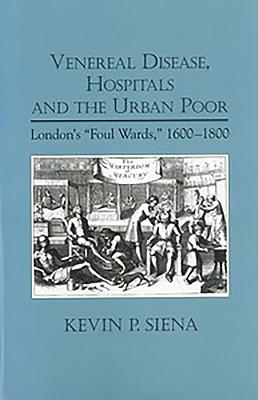A re-examination of the role of charity and treating venereal disease in public hospitals in early-modern London.
This book explores how London society responded to the dilemma of the rampant spread of the pox among the poor. Some have asserted that public authorities turned their backs on the "foul" and only began to offer care for venerealpatients in the Enlightenment. An exploration of hospitals and workhouses shows a much more impressive public health response. London hospitals established "foul wards" at least as early as the mid-sixteenth century. Reconstruction of these wards shows that, far from banning paupers with the pox, hospitals made treating them one of their primary services. Not merely present in hospitals, venereal patients were omnipresent. Yet the "foul" comprised a unique category of patient. The sexual nature of their ailment guaranteed that they would be treated quite differently than all other patients. Class and gender informed patients’ experiences in crucial ways. The shameful nature of the disease, and the gendered notion of shame itself, meant that men and women faced quite different circumstances. There emerged a gendered geography of London hospitals as men predominated in fee-charging hospitals, while sick women crowded into workhouses. Patients frequently desired to conceal their infection. This generated innovative services for elite patients who could buy medical privacy by hiring their own doctor. However, the public scrutiny that hospitalization demanded forced poor patients to be creative as they sought access to medical care that they could not afford. Thus, Venereal Disease, Hospitals and the Urban Poor offers new insights onpatients’ experiences of illness and on London’s health care system itself. Kevin Siena is assistant professor of history at Trent University.| FindBook |
有 1 項符合
Venereal Disease, Hospitals and the Urban Poor: London’s ”Foul Wards”, 1600-1800的圖書 |
 |
Venereal Disease, Hospitals and the Urban Poor: London’s ”Foul Wards”, 1600-1800 作者:Siena 出版社:University of Rochester Press 出版日期:2010-10-01 語言:英文 規格:平裝 / 367頁 / 22.9 x 15.2 x 2 cm / 普通級 |
| 圖書館借閱 |
| 國家圖書館 | 全國圖書書目資訊網 | 國立公共資訊圖書館 | 電子書服務平台 | MetaCat 跨館整合查詢 |
| 臺北市立圖書館 | 新北市立圖書館 | 基隆市公共圖書館 | 桃園市立圖書館 | 新竹縣公共圖書館 |
| 苗栗縣立圖書館 | 臺中市立圖書館 | 彰化縣公共圖書館 | 南投縣文化局 | 雲林縣公共圖書館 |
| 嘉義縣圖書館 | 臺南市立圖書館 | 高雄市立圖書館 | 屏東縣公共圖書館 | 宜蘭縣公共圖書館 |
| 花蓮縣文化局 | 臺東縣文化處 |
|
|
圖書介紹 - 資料來源:博客來 評分:
圖書名稱:Venereal Disease, Hospitals and the Urban Poor: London’s ”Foul Wards”, 1600-1800
|









